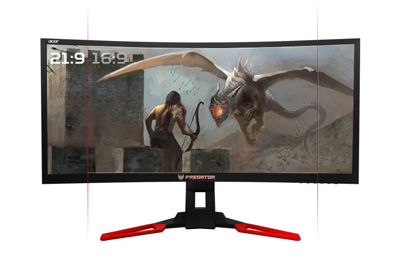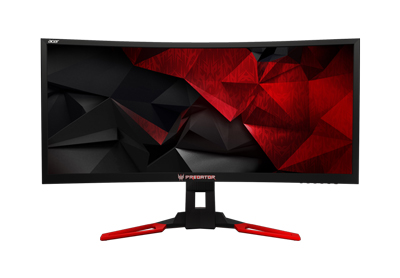Acer Predator Z35 Curved Ultra-Wide Gaming Monitor Review
For a while there’s been a new player in town regarding Gaming Monitors, and its promises are convincing at first glance, but does it truly deliver on what it flaunts?
The Acer Predator Z35 is the latest in Acer’s Ultra-Wide screen curved Gaming Monitor range, named Z35 as a reference to it’s screen size, which is 35-inches. At first glance, this screen gives the impression that it is a monster, not only in its size, but with the box it came in, and the features described. The box was probably the same size as my desk, and when I was finally able to take the screen out, and assembled the stand, I was very pleased with what I saw. I was slightly taken aback at the weight of the screen, finding it weighing slightly above 12kgs, not something that I am used to in terms of a gaming monitor, which adds to its monstrous reputation so far.
Wait… How wide?

What impressed me the most was the fact that the monitor is able to go beyond a refresh rate of 60Hz. HDMI is limited to 60Hz, but if your machine has a DP port, the screen can overclock its refresh rate, going from 75Hz to 144Hz, and even from 144Hz to it’s top refresh rate of 200Hz. I feel the 200Hz is slightly overkill as you can’t see much of a difference in it as you do with the change from 75Hz to 144Hz. Regardless, it’s still pretty staunch to be able to support a feature like that. DP also supports G-Sync, which is a feature that syncs the frames rendered by your GPU with the refresh rate of the screen, which is nice because it prevents screen tearing and stuttering.
Spring-Cleaning Required
The stand disappointed me slightly. It’s limited in how adjustable it can be, which is to say, has almost no means of adjustment. The screen stood too high for my taste, and I wished to be able to bring it down slightly, however the only adjustment I was able to make is tilting the screen itself upwards and downwards. If there is a way to adjust the height, I was not able to find it. The stand itself is bulky too, but understandably so, to be able to support the weight and vast wingspan of the monitor itself, so just a disclaimer that you will need to clear up some considerable desk space for this.

The ports on the screen are however a challenge of it’s own to get to. They are at the back, facing downwards, and snugly hidden inside a pocket of it’s own, about 3 inches from the bottom of the monitor. I resorted to using the front-facing camera to be able to navigate the cables into their respective slots, instead of trying to peak in from underneath like a car mechanic. There’s a DC power plug, the HDMI port, DP port, and a 3.5mm audio out port, and like many other gaming monitors, there’s an upstream USB port and four more USB 3.0 ports towards the back-right of the monitor. At least the LED underglow adds nice ambience to your gaming environment. The monitor even sports 2 x 9w DTS speakers.
[review]
Conclusion
Even though this monitor is actually quite impressive, and I had a great time testing it out, the above mentioned issues make me sceptical about whether or not it warrants the price it goes for. On Loot.co.za you can get it for R20,799, and on Get-IT Online it’s going for R21,399. Sure, it didn’t perform horribly at all, and I enjoyed the experience, which only makes me look forward to what Acer has in store next for it’s range of Predator monitors. In fact, Acer has revealed they are launching a new series of screens late January, early February that will, naturally, be even better than what we have seen to date! (Predator Z301CT with Tobii Eye-Tracking).

